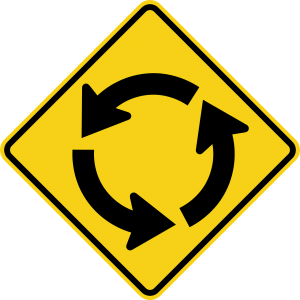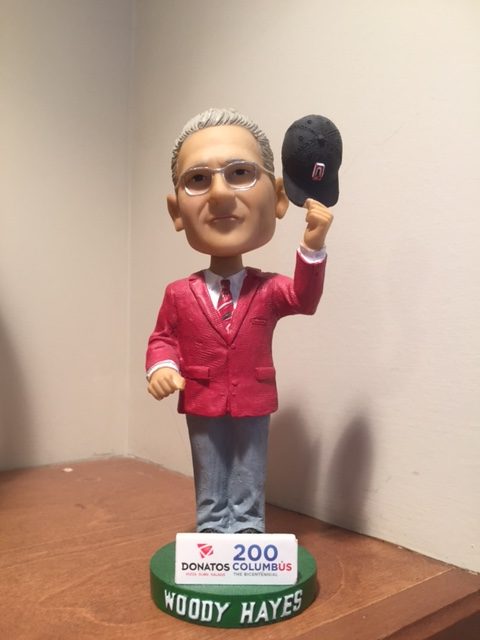Voice of Market Identifies “Roundabouts” in your Sales Process
The voice of your customer (VoC) and the voice of your market (VoM) are powerful data points if leveraged correctly. Your customers and your markets are eager for suppliers who take the time to understand them, their buying process, and the criteria they need to make buying decisions. Market-leading companies are constantly assessing how buyers buy and any shifts that occur in their markets and they adjust. One common outcome of the voice of the customer work is changing your repeatable sales process and eliminating any roundabouts in the sales process where sales stall or get lost.
I was asked to help the leader in marketing and product training develop a seminar on how to help companies tune in to their markets. The owners wrote a best-selling book titled Tuned in. (a must-read if you have not read it yet) This is what I have done my entire career and I was so excited for the opportunity to help thousands of companies and serve this market-leading team. Then 2008 hit. We like many companies experienced a large market shift, particularly in the tech market space and it was not the right time to launch a new seminar.
After that market shift of 2008, the company experienced a significant drop in their on-site customer-specific training. They offered public training where we would fill a conference center and train people from many different companies. One result of the public training was often someone coming forward after the class asking if we could do the same training but just for his or her team. We historically had a very high close rate when this occurred and we would provide an amazing onsite training experience. On-site training is a great way to get an entire team aligned and using the same framework.
Once the stock market dropped we saw a significant decrease in onsite sales. The company asked if I would help lead sales out of this recent sales decline.
We conducted win-loss calls with all our recent customers and the customers we recently did not win. (Just as we taught in our training) We asked open-ended questions about how they bought now after the stock market crash.
Was their process different?
Did they require new criteria to make buying decisions?
Who else in their organization was involved, if any in the buying decision? And so on…
What we learned was the following:
- Human resources no longer could make buying decisions alone over a specific $ value
- Human resources now had to sell the CEO and CFO on why they should invest in this training
- The customers we won shared how they would prefer speaking with one of our instructors much earlier in the sales process
Based on the above and much more feedback we mapped the buying process and next to it our repeatable sales process. What we looked for were common roundabouts where the opportunity to serve our clients spun out of control. These roundabouts are always opportunities for new sales tools. For example, since the human resources group now had to internally sell the CEO, we proactively provided a short slide deck written for a CEO buyer persona as a sales tool.
We introduced our instructors much earlier in the sales process as they requested and often asked human resources to invite others who could authorize the expenditure.
We developed a new sales process with new sales tools and trained our sales team.
Within 3 months sales started to climb and after 12 months we realized a sales increase of over 150%.
How about your company…
When did your team last capture the voice of your customers?
Did it result in a new sales process?
Did you identify new sales tools needed to help your buyers buy?
When did your team last capture the voice of your market?
strong>Did you map how your buyers are buying today? Notice any changes?
Did you adjust your sales process based on how buyers are buying today?
Do your markets have new problems that need to be solved since the last time you did a value proposition audit?
We serve dynamic markets that continue to shift and change. How many changes has your team identified in the last year? Two years? Five years? Did you adjust to those shifts strategically or did you, like many teams tell sales to “just make it happen, work harder”?
If you have not recognized any market shifts nor changed your sales process or designed new sales tools it is broken but there is still time to tune in to how your buyers are buying and the market voice.
Spend time in front of your customers and understand how they are buying today, what they must-have today and make the necessary adjustments. I estimate as high as 60% -70% of companies are not actively listening for the voice of their market today. Of the 40%-30% who are, less than 10% will actually adjust their sales process and design new sales tools.
Why wouldn’t your team want to be one of those top 10% who hit and surpassed their sales numbers next year?
There is power in capturing the voice of the customer and how you use what you have learned to adjust your repeatable sales process. Simple often-minor adjustments can have a huge impact on your sales close rate. Adjusting your sales process to how your buyers buy today creates a GPS for your salespeople to follow to the sale.





